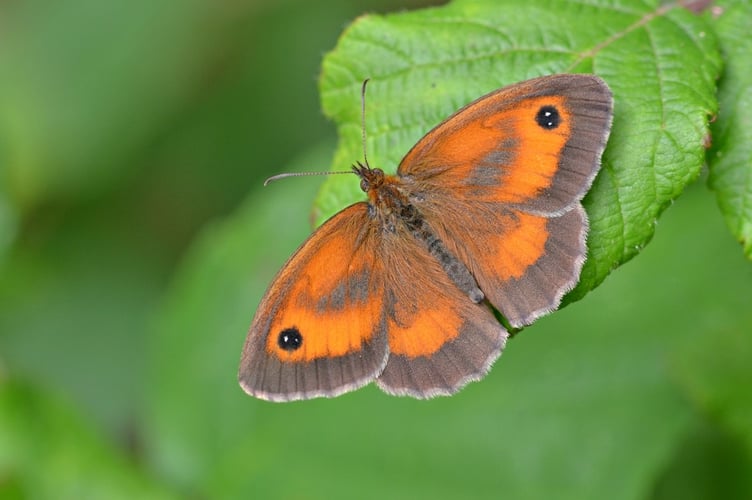Why have there been fewer insects this year? It’s been brought up many times by nature lovers I’ve spoken to through the spring and summer.
The first hint I noticed was in May when no solitary bees had nested in my bee hotel. Then throughout spring and summer there were few flying insects than in previous years; bees, butterflies, moths and flies, all vital pollinators not just of the flowers that decorate our gardens, parks and wild spaces but also of our foodstuffs.

Several UK nature conservation charities have been reporting seeing fewer flying insects this year. Among them is the charity Buglife, which is devoted to the conservation of all invertebrates; everything from bees to beetles, worms to woodlice and jumping spiders to jellyfish.
Buglife says many individuals and conservation groups have been expressing their fears about our future if we don’t take action for insects now. The charity’s director of fundraising and communication, Paul Hetherington, told me: “Sadly this lack of insects being noticed is not a new phenomenon. Our Bugs Matter citizen science survey on flying insect numbers showed a 78% fall compared to 2004. This year has been a particularly bad time for our pollinators with prolonged wet spells and sudden cold dips creating the conditions for a catastrophic fall in numbers. Human activities continue to have a huge impact on nature; habitat loss and damage, pesticide use, pollution, and climate change all contribute to the decline in insects. Society must heed the warning signs of ecological collapse, and take urgent action to restore nature.”
We can help insects and other invertebrates by creating “wild” spaces in our gardens where they can thrive, as well as growing flowers which attract butterflies and moths by providing valuable food and nectar. A search online will reveal lots of ideas. Buglife has its own ideas: see buglife.org.uk/get-involved/gardening-for-bugs
Yet creatures cannot exist and survive in “wildlife islands”. Many find it difficult or impossible to move around because their habitats have become walled in by agricultural developments, urban landscapes, roads and gardens. They including vital pollinators and other invertebrates. Other wildlife locally that depends on healthy, connected habitats includes Nightjars, Woodlarks, Nightingales, Silver Studded Blue and Small Heath butterflies, Sand lizards, Serotine Bats, Smooth Cat’s-ear, Shepherd’s Cress, Bog Pimpernel and Bottle Sedge.
Buglife has a solution called B-lines. These are “insect pathways” running through the countryside and towns, along which it is creating (or restoring) wildflower-rich stepping stones. They link existing wildlife areas together and will create a network, like a railway, that will eventually weave across the UK landscape. It will provide large areas of new habitat benefiting many types of other wildlife.
The B-Lines mapped so far can be seen at www.buglife.org.uk/our-work/b-lines. Buglife is helping to fill the mapped areas with restored and new wildflower-rich areas with the help of conservation partners, land managers, businesses and local authorities.
To create B-lines it is essential first to see where wildlife habitats lie. As reported here last year, this mapping in Surrey is being assisted by a major People’s Postcode Lottery-funded scheme called Space4Nature, of which Buglife is a partner. Space4Nature uses satellite imagery, artificial intelligence and volunteers to help map, connect and restore wildlife habitats across Surrey. It is a three-year partnership between the University of Surrey, Surrey Wildlife Trust, Buglife and Painshill Park Trust.




